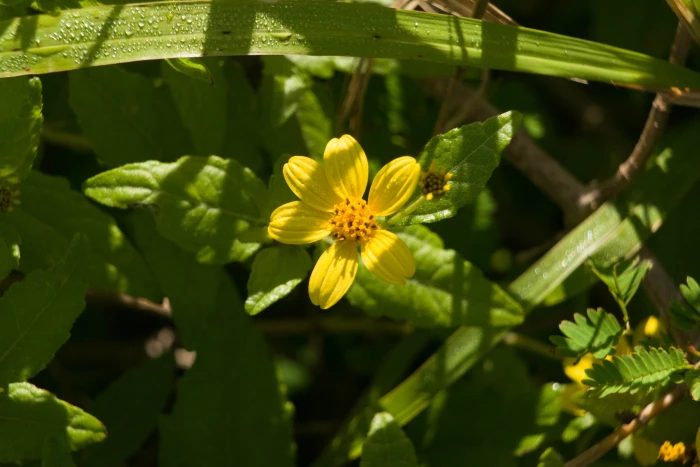Shrubland Nehe
(Lipochaeta lobata)
Shrubland Nehe (Lipochaeta lobata)
/
/

Kevin Faccenda
CC BY 4.0
Image By:
Kevin Faccenda
Recorded By:
Copyright:
CC BY 4.0
Copyright Notice:
Photo by: Kevin Faccenda | License Type: CC BY 4.0 | License URL: http://creativecommons.org/licenses/by/4.0/ | Rights Holder: Kevin Faccenda | Publisher: iNaturalist | Date Created: 2021-02-14T10:12:39-08:00 |






















Estimated Native Range
Climate Requirements
| • Precipitation | 25" - 35" |
| • High Temp. | 11°F - 87°F |
| • Low Temp. | -9°F - 64°F |
Summary
Lipochaeta lobata, commonly known as shrubland nehe, is a perennial herb native to the Hawaiian Islands, specifically found in coastal dry shrublands and dry forests on Oʻahu, Maui, and Niʻihau. It is a member of the Asteraceae family and var. leptophylla is a federally listed endangered species. The plant typically grows to a height of 1-3 feet and has a sprawling form. It produces yellow, daisy-like flowers throughout the year, with a peak flowering season in the summer. The flowers are modest in size but can be quite showy due to their bright color and abundance.
Shrubland nehe is valued for its role in maintaining the ecological balance of its native dry habitats, where it helps to stabilize soils and provides nectar for native insects. In cultivation, it can be used in xeriscaping, a landscaping method that reduces or eliminates the need for supplemental water from irrigation. It is well-suited to rock gardens, native plant gardens, and as part of restoration projects for degraded dryland ecosystems. Shrubland nehe prefers well-drained soils and full sun exposure. It is drought-tolerant once established, making it a low-maintenance choice for suitable climates. However, it can be susceptible to root rot if overwatered or planted in poorly drained soils.CC BY-SA 4.0
Shrubland nehe is valued for its role in maintaining the ecological balance of its native dry habitats, where it helps to stabilize soils and provides nectar for native insects. In cultivation, it can be used in xeriscaping, a landscaping method that reduces or eliminates the need for supplemental water from irrigation. It is well-suited to rock gardens, native plant gardens, and as part of restoration projects for degraded dryland ecosystems. Shrubland nehe prefers well-drained soils and full sun exposure. It is drought-tolerant once established, making it a low-maintenance choice for suitable climates. However, it can be susceptible to root rot if overwatered or planted in poorly drained soils.CC BY-SA 4.0
Plant Description
- Plant Type: Shrub, Herb
- Height: 1-3 feet
- Width: 2-4 feet
- Growth Rate: Moderate
- Flower Color: Yellow
- Flowering Season: Spring, Summer, Fall
- Leaf Retention: Semi-deciduous
Growth Requirements
- Sun: Full Sun, Part Shade
- Water: Medium
- Drainage: Medium, Fast
Common Uses
Butterfly Garden, Drought Tolerant, Low Maintenance
Natural Habitat
Native to coastal dry shrublands and dry forests on Oʻahu, Maui, and Niʻihau
Other Names
Common Names: Nehe, Lobedleaf Nehe
Scientific Names: Lipochaeta lobata
GBIF Accepted Name: Lipochaeta lobata